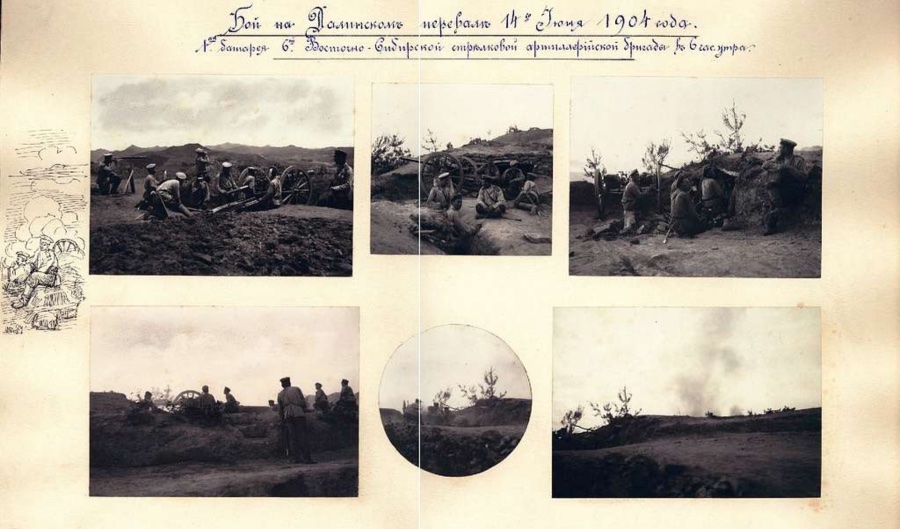Delving into the rich tapestry of our family history and tracing our roots can be a captivating and enlightening journey. As genealogical research uncovers the stories and connections of our ancestors, it becomes crucial to preserve and share this valuable information for future generations. Preserving our genealogy research not only safeguards our heritage but also ensures that the knowledge we’ve gathered will continue to benefit our families and contribute to the collective understanding of our shared human history.
In this article, we will explore practical strategies and methods to effectively preserve and share your genealogy research, enabling you to create a lasting legacy and foster connections with relatives around the world. From organising and digitising your research to engaging with online communities and passing down knowledge to future generations, we will provide you with valuable insights and guidance to embark on this fulfilling endeavour. Join us as we unlock the secrets of preserving and sharing your genealogy research and witness the profound impact it can have on your family’s heritage.
Choosing the Right Preservation Methods: Ensuring Long-Term Storage
Preserving your genealogy research for the long haul requires thoughtful consideration of the methods you employ. As time passes and technology evolves, it becomes increasingly important to select preservation strategies that can withstand the test of time. Here are some key factors to consider when choosing the right preservation methods for ensuring long-term storage of your precious genealogical findings.
- Physical Storage Options: Traditional physical storage methods such as acid-free archival boxes, folders, and binders are still viable choices. Look for materials that are specifically designed to protect against deterioration, such as acid-free paper, polyester sleeves, and archival-safe adhesives. Additionally, consider utilizing acid-free file folders or photo sleeves to safeguard delicate documents and photographs from light, dust, and humidity.
- Digital Preservation: In the digital age, digitizing your genealogy research has become a popular choice for long-term storage. Digital files are compact, easily replicated, and can be conveniently backed up for added security. Choose file formats that are widely supported and likely to remain accessible in the future, such as PDF, JPEG, or TIFF. Implement a comprehensive backup strategy by storing copies on multiple devices, external hard drives, cloud storage services, or utilizing online genealogy platforms.
- Metadata and Documentation: Regardless of the preservation method you choose, adding comprehensive metadata and documentation to your genealogy research is essential. Include detailed information about the origin, significance, and context of each item. Capturing relevant details like dates, locations, names, and relationships will not only aid future researchers but also preserve the integrity and value of your research over time.
- Disaster Preparedness: Safeguarding your genealogy research against unexpected disasters is crucial. Protect physical documents and artefacts from potential hazards such as fires, floods, or natural disasters by storing duplicates or digital backups in off-site locations. Utilise fireproof and waterproof storage containers for added security. For digital files, consider cloud storage services that offer redundancy and disaster recovery features.
Digitising Your Genealogy Research: Making It Accessible and Searchable
In the digital age, digitising your genealogy research opens up a world of possibilities, making your findings more accessible, searchable, and easily shareable. By converting your physical documents, photographs, and records into digital formats, you can unlock the potential to preserve and explore your family history in new and exciting ways. Here are key considerations and steps to take when digitising your genealogy research.
- Assess Your Collection: Begin by assessing the scope of your genealogy collection. Identify the documents, photographs, letters, and other materials that you wish to digitise. Prioritise items that are fragile, deteriorating, or of significant historical value. Creating a list or inventory will help you stay organised throughout the digitisation process.
- Choose the Right Equipment: To digitise your physical materials, you’ll need appropriate equipment. Invest in a high-quality scanner that can handle various sizes and types of documents, including photos and negatives. Look for a scanner with adjustable settings to capture the best possible image quality. Additionally, consider acquiring a flatbed scanner or a portable document scanner for convenience and versatility.
- Optimise Image Quality: When digitising your genealogy materials, strive for optimal image quality. Scan at a resolution that ensures clarity and legibility while balancing file size. Aim for a resolution of at least 300 dots per inch (dpi) for documents and 600 dpi for photographs. Save your scanned files in a lossless format, such as TIFF, to preserve the highest level of detail.
- Organise and Catalogue: As you digitise your materials, establish a clear and consistent organisational system. Create folders and subfolders on your computer to categorise and store the digital files. Consider organising them by family branch, surname, or document type to facilitate easy searching and retrieval in the future. Assign meaningful file names and include relevant metadata, such as names, dates, and locations, to enhance search-ability.
- Backup and Storage: Safeguard your digitised genealogy research by implementing a robust backup and storage plan. Create redundant copies of your files and store them in multiple locations, such as external hard drives, cloud storage, or archival platforms. Regularly back up your digital collection to ensure its preservation in case of data loss or technological obsolescence.
- Utilise Optical Character Recognition (OCR): Make your digitised documents searchable by utilising Optical Character Recognition (OCR) technology. OCR software converts scanned images of text into editable and searchable text files. This allows you to search for specific names, dates, or keywords within your digitised documents, saving you time and effort in your research.
Writing a Family History: Bringing Your Ancestors’ Stories to Life
Your genealogy research is not complete until you’ve captured the stories and experiences of your ancestors in a written family history. Writing a family history is an excellent way to bring your research to life, share your findings with others, and preserve your family’s heritage for future generations. Here are some tips to help you get started on writing a compelling family history.
- Define Your Audience: Before you begin writing, consider who your target audience is. Are you writing for immediate family members, extended relatives, or a broader audience? Knowing your audience will help you tailor your writing style, tone, and approach.
- Outline Your Story: Start by creating an outline of your family history. This will help you organise your thoughts, structure your narrative, and identify key themes and events. Consider including a family tree, timeline, or map to provide context and enhance your readers’ understanding.
- Conduct Further Research: Your genealogy research should serve as the foundation of your family history, but don’t be afraid to conduct additional research to fill in gaps and flesh out your narrative. Explore historical records, newspaper archives, and other primary sources to uncover new details and insights about your ancestors.
- Tell a Story: Avoid presenting a dry list of facts and dates. Instead, aim to tell a compelling story that brings your ancestors to life. Incorporate anecdotes, quotes, and personal details to create a vivid picture of their lives and personalities.
- Incorporate Historical Context: Situate your family history within its historical context. Explore the social, cultural, and political events and trends that shaped your ancestors’ lives and experiences. This will provide a richer and more nuanced understanding of their world and help readers connect with their stories.
- Edit and Revise: Once you’ve completed a draft of your family history, edit and revise it carefully. Read it aloud, share it with others, and consider hiring a professional editor to ensure its clarity, coherence, and overall quality.
Collaborating with Online Genealogy Communities: Leveraging the Power of the Internet
The Internet has revolutionised the world of genealogy research, connecting individuals with shared interests, ancestral connections, and a wealth of resources. By collaborating with online genealogy communities, you can tap into a vast network of knowledge, expertise, and support. Here’s how you can leverage the power of the internet to enhance your genealogy research and connect with fellow enthusiasts.
- Join Online Genealogy Forums and Message Boards: Explore popular genealogy forums and message boards dedicated to specific regions, surnames, or research topics. Engage in discussions, ask questions, and share your own findings. These platforms provide an invaluable opportunity to connect with experienced researchers, exchange ideas, and access specialised knowledge.
- Utilise Social Media Groups: Join genealogy-focused groups on social media platforms such as Facebook, Twitter, and LinkedIn. These groups bring together a diverse community of individuals passionate about genealogy. Share your research discoveries, seek advice, and participate in conversations with fellow researchers from around the world.
- Collaborate on Online Family Trees: Platforms like Ancestry.com, MyHeritage, and Geni allow you to create and share online family trees. Collaborate with other researchers who have overlapping family lines or shared ancestors. By connecting with distant relatives and combining efforts, you can fill in missing gaps in your research and uncover new branches of your family tree.
- Participate in DNA Genealogy Projects: DNA testing has become a powerful tool in genealogy research. Explore online platforms and projects that focus on DNA analysis and genetic genealogy. By comparing your DNA results with others, you can discover relatives, trace migration patterns, and unveil ancestral connections that traditional records may not reveal.
- Attend Virtual Genealogy Conferences and Webinars: The internet offers access to virtual genealogy conferences, webinars, and workshops featuring renowned experts in the field. Take advantage of these events to learn new research techniques, stay updated on the latest advancements, and connect with fellow genealogists from around the globe.
- Contribute to Online Collaborative Databases: Many online genealogy platforms feature collaborative databases where researchers can contribute and access a wealth of records, photos, and documents. By sharing your own research findings, you contribute to the collective knowledge and help others in their genealogy quests. Similarly, explore the existing resources contributed by fellow researchers to benefit your own research.
Preserving and Sharing Family Photos and Memorabilia: Capturing the Essence of Your Ancestors
Family photos and memorabilia hold a special place in our hearts as they offer glimpses into the lives and personalities of our ancestors. Preserving these treasures and sharing them with future generations allows us to capture the essence of our ancestors and forge a deeper connection with our family’s history. Here are some essential tips for preserving and sharing your family photos and memorabilia.
- Handle with Care: Family photos and memorabilia are often delicate and susceptible to damage. Handle them with clean, dry hands to avoid transferring oils or moisture. Use cotton gloves when necessary, especially for fragile items. Support photographs from the edges or use archival-safe photo corners and sleeves to prevent damage from adhesive.
- Create Digital Copies: Digitising your family photos and memorabilia ensures their preservation and allows for easy sharing. Use a high-resolution scanner or a specialised photo scanner to create digital copies. Capture both the front and back of photographs and record any written notes or inscriptions. Save the digital files in a secure location and consider using cloud storage for extra protection.
- Organise and Catalogue: Organise your digitised and physical photos and memorabilia using a consistent system. Sort them by family branch, chronological order, or theme. Consider creating an inventory or database that includes relevant details such as names, dates, locations, and descriptions. This will make it easier to locate specific items and provide context for future generations.
- Share Stories and Context: Take the time to document the stories, memories, and context surrounding your family photos and memorabilia. Write down what you know about each item, such as who is depicted, where it was taken, and any anecdotes or historical background. Share these stories with your family members to bring the past to life and ensure that the rich heritage is passed down.
- Preserve and Display: Select appropriate preservation materials for physical items. Use acid-free archival boxes, folders, or sleeves to store and protect photographs, letters, documents, and other memorabilia. Display selected items in acid-free frames or albums, ensuring they are out of direct sunlight and away from excessive heat or humidity.
- Create a Family Heritage Website or Blog: Consider creating a dedicated family heritage website or blog to showcase and share your family photos, stories, and research findings. This platform can serve as a central hub for relatives to connect, contribute, and learn about their shared ancestry. Regularly update it with new discoveries and engage with family members who have additional insights to offer.
Educating Future Generations: Engaging Children and Teens in Genealogy
Introducing children and teens to the captivating world of genealogy can ignite their curiosity, instil a sense of identity, and foster a deep appreciation for their family’s history. Engaging young minds in genealogy not only creates a bridge between generations but also empowers them with a greater understanding of their roots. Here are some effective strategies to educate and involve children and teens in the fascinating journey of genealogy.
- Start with Stories: Share intriguing and age-appropriate stories about their ancestors to spark their interest. Highlight personal experiences, adventures, and challenges faced by family members in the past. Encourage questions and engage in conversations that encourage them to delve deeper into their family history.
- Make It Interactive: Transform genealogy into an interactive and hands-on experience. Plan family tree activities where children can add their names, pictures, and stories to a physical or digital family tree chart. Encourage them to interview older relatives, record their memories, and create oral histories. Engaging in activities like scavenger hunts to locate family photos or artefacts can also make the process exciting.
- Utilise Online Resources: Leverage the power of online genealogy resources specifically designed for children and teens. Websites like “MyHeritage Kids,” “Ancestry.com Kids,” and “FamilySearch Learning Center” offer engaging games, quizzes, and interactive lessons to teach the basics of genealogy in a fun and age-appropriate manner.
- Plan Field Trips: Visit local archives, libraries, historical societies, or cemeteries together. These trips provide opportunities to explore original documents, gravestones, and historical artefacts that connect children and teens with their ancestors in a tangible way. Arrange visits to ancestral hometowns or landmarks, allowing them to experience the places that hold significance in their family history.
- Engage with Technology: Introduce genealogy-focused apps, software, or online platforms that cater to children and teens. Encourage them to create digital family trees, collaborate with relatives on shared research projects, and explore interactive maps or timelines that bring historical events to life. Emphasise the responsible use of technology and the importance of privacy when sharing personal information.
- Celebrate Family Traditions: Connect children and teens with their heritage by celebrating family traditions and cultural customs. Engage them in preparing traditional recipes, participating in cultural events, or learning about significant holidays or festivals observed by their ancestors. These experiences deepen their connection to their roots and foster a sense of pride in their heritage.
Conclusion: Embracing the Rewards of Preserving and Sharing Your Genealogy Research
Preserving and sharing your genealogy research is not just a personal endeavour; it is a meaningful contribution to the legacy of your family and future generations. By following the steps outlined in this article, from choosing the right preservation methods to engaging children and teens in genealogy, you can ensure that your family’s history remains alive, accessible, and cherished.
Through the power of digitisation, collaborative online communities, and storytelling, you can capture the essence of your ancestors and create a lasting connection with your family’s heritage. By educating future generations about their roots, you empower them with a sense of identity, curiosity, and a deep appreciation for the past.
As you embark on this journey of preserving and sharing your genealogy research, remember that every document, photograph, and story holds immense value. Embrace the opportunities provided by technology and engage with others who share your passion for genealogy. Together, we can weave a tapestry of stories that illuminates our family history and preserves our shared legacy.
Start preserving, sharing, and celebrating your genealogy research today, knowing that the knowledge and connections you create will endure for generations to come.
Image Source:
- Old photo album: picryl





